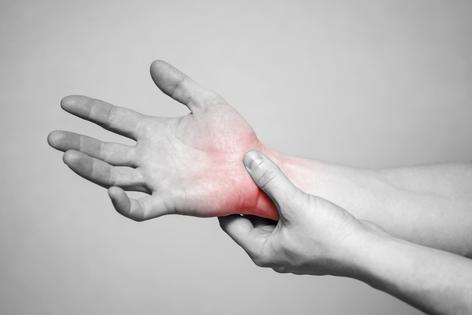Mayo Clinic Q&A: Work with your hands? Watch out for carpal tunnel syndrome: hed ...
Published in Health & Fitness
DEAR MAYO CLINIC: I’m a homebuilder and have begun experiencing numbness and tingling in my hands. Sometimes I drop things because I can’t get a good grip. A friend suggested I might have carpal tunnel syndrome. But doesn’t that mostly affect people who use computers all day? Can you explain more about the condition?
ANSWER: Working with your hands day after day can take a toll on them, causing pain, numbness and weakness. Carpal tunnel syndrome is one condition that can affect many types of occupations, including farmers, truck drivers, factory and construction workers, and others.
Carpal tunnel is a condition caused by compression of the median nerve located in the wrist. This nerve provides feeling to the thumb and the index, middle and part of the ring fingers, and also sends signals to the muscles around the base of the thumb.
Some causes of carpal tunnel syndrome include medical conditions such as arthritis, gout, diabetes, amyloidosis, infections, masses and severe wrist injuries. Other causes are environmental or workplace conditions that involve forceful and repetitive gripping, and using heavy machinery and vibrating manual tools.
The symptoms of carpal tunnel syndrome include:
Diagnosing carpal tunnel syndrome
To determine if you have carpal tunnel syndrome, an orthopedic specialist will discuss the history of your symptoms and perform a physical examination of your hands and wrists.
Other tests may be performed or requested, including:
Treating the condition
Treatment strategies are divided into nonsurgical and surgical measures.
Nonsurgical treatments include wearing a wrist brace during the night and undergoing cortisone injections.
Surgical intervention for carpal tunnel syndrome is a carpal tunnel release. The roof of the carpal tunnel is divided, which relieves pressure on the median nerve. Surgery may be open or endoscopic.
Both open and endoscopic surgery are outpatient procedures. Endoscopic surgery is minimally invasive. It’s performed in an operating room with or without light sedation. After medication is injected to numb the palm and wrist, a small incision is made near the wrist. A tiny camera is inserted through the incision into the carpal tunnel. The surgeon inspects the tunnel and then uses a blade attached to the camera to cut the transverse carpal ligament — the roof of the tunnel — to relieve nerve compression.
For the best results after surgery, be sure to consult an orthopedic hand surgeon while numbness and tingling are still intermittent rather than constant.
Preventing carpal tunnel syndrome
There are no proven strategies to prevent carpal tunnel syndrome, but you can minimize stress on the hands and wrists by:
If you’re experiencing symptoms, consult with an orthopedic specialist to determine the best treatment to keep you on the job or get you back to work. — Kristin Karim, M.D., Orthopedic Surgery, Mayo Clinic, Albert Lea and Austin, Minnesota
(Mayo Clinic Q & A is an educational resource and doesn’t replace regular medical care. This Mayo Clinic Q&A represents inquiries this healthcare expert has received from patients. For more information, visit www.mayoclinic.org.)
©2024 Mayo Foundation for Medical Education and Research. All Rights Reserved. Distributed by Tribune Content Agency, LLC.










Comments